- Home
- Fishing Gear
Taking a Look at
Saltwater Fishing Gear
Saltwater Fishing Gear, or tackle, is primarily all those items that connect the angler directly to the fish - the rod, reel, line, swivels and snaps, and the hook. But that's just a start ...
Look at any tackle shop, or on-line tackle suppliers website, and you'll see an absolutely bewildering array of saltwater fishing gear.
Do we really need all that stuff?
Well, on an individual basis, clearly not, because we all tend to specialise to one degree or another.
This may be down to our locality, fascination with one particular species or technique, or cost. You have to stop somewhere ...
But collectively, yes - we need it.
Just look at all the variables:~
On this page...
- Venues ~ Surf beaches, piers and jetties, rocky shores, estuaries, wreck marks and deep water offshore
- Techniques ~ Spinning and baitcasting, jigging, trolling, bottom fishing and float fishing.
- Species ~ Everything from the humble harbour mullet to the mighty marlin
The Most Important Items of Saltwater Fishing Gear...
Rods
So it's no surprise that saltwater fishing rods vary enormously in terms of length, power and fittings - and cost of course.
The main differentiator between rods is not, as you may think, whether they're boat rods or shore rods - but whether they're to be used with a fixed spool reel or a multiplier, because ...
- Multipliers (baitcast reels) are used on top of the rod, so the line guides must be sized and spaced such that the line is kept clear of the rod when it takes up its maximum bend.
- There's no such problem with a fixed spool reel (spinning reel) as these are used below the rod. Consequently the guides can be spaced further apart, but must be larger - the ones closest to the reel anyway - to accommodate the line as it comes off the spool in curling spirals.
OK, it is possible to use a fixed spool reel on a rod intended for a multiplier, providing you're happy with shorter casts than you'd otherwise achieve - but not the other way round, as if you use a multiplier reel on a rod intended for a fixed spool reel, the line will rub against the blank, damaging both rod and line. You do need to get this right!
Some tackle suppliers market their fishing rods and reels as 'rod and reel combos' which avoids the risk of an inexperienced angler making a poor choice.
So, the rod types - surf rods, boat rods, pier rods, bass rods, trolling rods, spinning rods, travel rods...
Too many for here; let's take a closer look at them at 'Saltwater Fishing Rods...'
Reels
There are three primary categories of saltwater fishing reels:~
- Multiplier Reels ~ These reels are designed for a range of applications. Small ones, known as baitcast reels or baitcasters, are intended for casting lures, big game multipliers are designed for offshore trolling, and traditional reels bridge the gap between the two.
- Fixed Spool Reels ~ These reels, though often used in situations in which a multiplier would be better, are designed primarily for casting. There can be no other reason for mounting the spool transversely to the rod, then having to turn the line through 90 degrees to wind it back on.
- Drum Reels ~ These reels, which to my knowledge are only made today by Alvey Reels of Australia, are truly multi-purpose. Some versions can turn across the rod for casting, much in the way of a fixed spool reel, then revert to the normal position for line retrieval. They deserve to be much more popular in the UK than they are.
But there's a lot more to reels than this, so let's take a closer look at them at 'Saltwater Fishing Reels ...'
Line
Today's saltwater fishing lines are produced in three main types:~
- Nylon fishing line, more often referred to as monofilament fishing line, and its technically superior development fluorocarbon fishing line.
- Braid fishing line, which is a thread-like yarn made up of HDPE (High Density Polyethylene) fibres like Spectra and Dyneema. These 'super-lines' - which must be connected with special braided fishing line knots - shouldn't be confused with the older Dacron fishing line which is a braid made from polyester fibres.
- Single-strand wire line, which is used with highly specialised gear for deep trolling.
Many sea anglers are happy to use nylon monofilament line for all their saltwater fishing needs, as it's an excellent line for most situations, but there are times when one of the hi-tech variants would perform better.
For example, the low stretch, high strength, small diameter properties of spectra fishing line and dyneema fishing line make them ideal for some applications, and the near invisibility of fluorocarbon fishing line can make all the difference in clear waters.
But as with many things, every upside has a corresponding downside, and so it is with these hi-tech lines.
Follow the links to each of the line types and you'll see what I mean ...
Hooks
One of the smallest and most significant items of your terminal tackle, fish hooks have been in a constant state of development since the Stone Age.
There's a hook pattern for every aspect of saltwater fishing, from fine wire hooks for delicate baits, through to every catch-and-release angler's favourite, the improbable looking circle hook - and there are right and wrong ways of tying fishing hooks to each of the line types described above.
Fish hook sizes are something of a mystery at first glance, but there is a logic behind it. The smallest you're likely to need will be a size 12 for estuary mullet, and the largest an impressive 12/0 for big game fish.
Fish hooks don't always just catch fish. Give them half a chance and they'll catch you too, so take care and treat them with respect. Even so, the odds are that sooner or later ...
If you do manage to get one embedded in your finger, or some other sensitive body part, you'll need to know how to remove it. There're two ways that I know of - neither of which will encourage you to do it again - and here they are ...
Swivels and Snaps
Fishing swivels and snaps are probably the smallest item in your tackle box, but no less important for it, because ...
- If swivels don't work as intended - that is allowing any line twists to unwind even when under high load - the line will eventually kink and break far below its stated breaking strain.
- If a snap opens under load, you'll lose everything downstream of it.
- If the item has been poorly manufactured, it will break below its marked breaking strain.
You'll be more than a tad displeased should either of these events occur - I suppose you could say that "swivels must and snaps mustn't".
So good quality fishing swivels and snaps are essential, so always buy well-known brands made by respected manufacturers - these are definitely not an item to be bought on the basis of low price alone.
And Finally ...
Continuing the theme of the previous paragraph, these items of saltwater fishing gear contrive to make the difference between hooking a fish and landing it - or just hooking it ...
But of course, clamping a high quality reel onto a high quality rod doesn't necessarily make it a high quality outfit. Fishing rods and reels have to be properly matched for optimum performance.
So buy the very best saltwater fishing gear you can afford, and look after it well.
Recent Articles
-
Sea Fishing Rods and Reels Must Be Compatible for a Balanced Outfit
Mar 08, 21 08:30 AM
A quality reel fitted to a quality rod doesn't necessarily make it a quality outfit. Your fishing rods and reels have to be properly matched if you're to get the best out of them, and here’s how -
Essential Lure Fishing Tips That All Saltwater Anglers Should Know
Mar 08, 21 04:51 AM
Which single lure fishing tip applies to trolling, jigging, baitcasting, spinning, fly fishing and any other branch of lure fishing? Well, it is the one at the top of this list -
Vital Jig Fishing Tips That You Really Cannot Afford To Miss!
Mar 07, 21 10:20 AM
Essential jig fishing tips to help you select the right lure for successful jig fishing, together with the techniques required to get the most out of your jig fishing outfit
















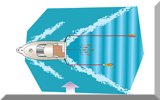

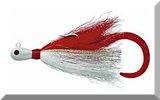
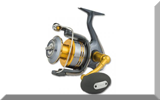
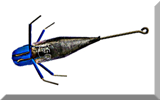
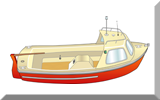
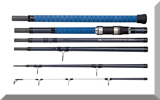
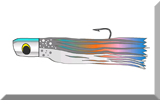
New! Comments
Have your say about what you've just read! Leave me a comment in the box below.